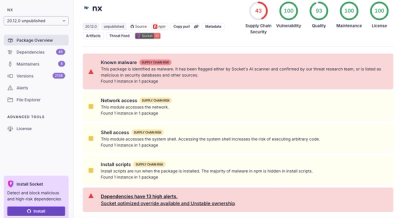Arml Translator Library Documentation
The Translator library provides a powerful, flexible, and easy-to-use interface for integrating translation functionality into your application. It supports translating text, batch translations, and language detection through a robust API.
Installation
To use the Translator library in your project, install it via npm:
npm install arml
Quick Start
Here’s how to get started with the Translator library:
Import and Initialize the Translator
import {Translator} from "arml";
const translator = new Translator("your_api_key_here");
export default translator;
Replace "your_api_key_here" with your actual API key.
Example: Translating Text
const translatedText = await translator.translate("Hello, world!", { target: "es" });
console.log(translatedText?.translated_text);
Features
1. Translate Text
Translate a single text to a target language with ease.
Method: translate
translate(
text: string,
{ source = "auto", target = "en" }: TranslateOptions
): Promise<TranslationResponse | null>
- Parameters:
text (string): The text to translate.source (optional): The source language (default: auto-detected).target (string): The target language.
- Returns: A promise resolving to the following structure:
interface TranslationResponse {
original_text: string;
source_language: string;
target_language: string;
translated_text: string;
pronunciation: string | null;
passing_time: number;
}
Example
const response = await translator.translate("Bonjour", { source: "fr", target: "en" });
console.log(response?.translated_text);
console.log(response);
2. Batch Translate
Translate multiple texts in a single request.
Method: batchTranslate
batchTranslate(
texts: string[],
{ source = "auto", target = "en" }: TranslateOptions
): Promise<BatchTranslationResponse | null>
- Parameters:
texts (string[]): Array of texts to translate.source (optional): The source language (default: auto-detected).target (string): The target language.
- Returns: A promise resolving to the following structure:
interface BatchTranslationResponse {
translations: BatchTranslation[];
passing_time: number;
}
interface BatchTranslation {
id: number;
uuid: string;
original_text: string;
source_language: string;
target_language: string;
translated_text: string;
}
Example
const batchResponse = await translator.batchTranslate([
"Hola",
"Bonjour",
"Hallo",
], { target: "en" });
console.log(batchResponse?.translations);
3. Detect Language
Identify the language of a given text.
Method: detect
detect(text: string): Promise<DetectTranslationResponse | null>
- Parameters:
text (string): The text whose language needs to be detected.
- Returns: A promise resolving to the following structure:
interface DetectTranslationResponse {
text: string;
detected_language: string;
confidence: string;
passing_time: number;
}
Example
const detectedLang = await translator.detect("Hola");
console.log(detectedLang?.detected_language);
console.log(detectedLang);
4. Quick Translate
Perform a one-off translation without creating a Translator instance.
Method: quick
static quick({
text,
apiKey,
options,
}: {
text: string;
apiKey: string;
options: TranslateOptions;
}): Promise<string | undefined>
- Parameters:
text (string): The text to translate.apiKey (string): The API key for the translation service.options (TranslateOptions): Source and target language options.
- Returns: The translated text or undefined if an error occurs.
Example
const quickTranslation = await Translator.quick({
text: "Bonjour",
apiKey: "your_api_key_here",
options: { target: "en" },
});
console.log(quickTranslation);
API Reference
Constructor
new Translator(apiKey: string)
- Parameter:
apiKey (string): Your API key required to access the translation service.
- Throws: An error if no API key is provided.
Types
The library provides several types to ensure proper usage:
TranslationResponse: Represents the response for a single translation.BatchTranslationResponse: Represents the response for batch translations.DetectTranslationResponse: Represents the response for language detection.TranslateOptions: Configuration options for translation requests.
Example: Importing Types
import type {
BatchTranslationResponse,
DetectTranslationResponse,
TranslationResponse,
TranslateOptions,
} from "@/types";
Error Handling
The library gracefully handles errors, logging them to the console. Ensure that you provide valid API keys and parameters to avoid issues.
Resources



